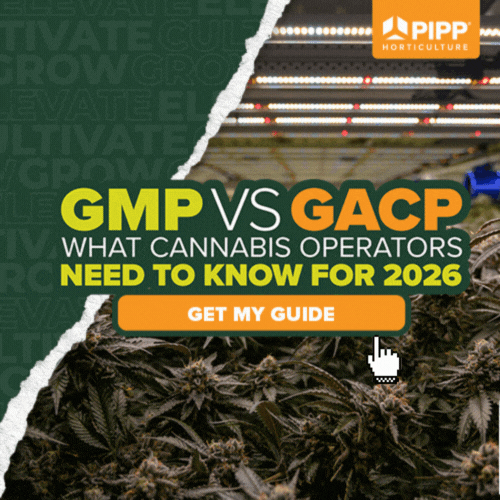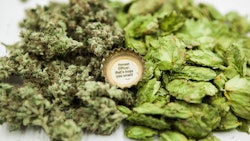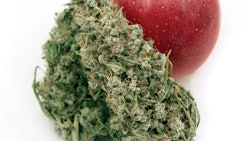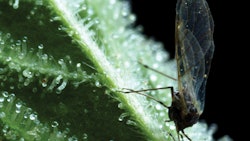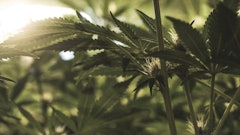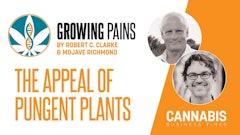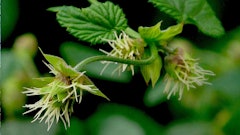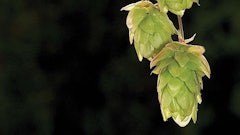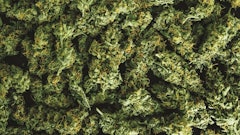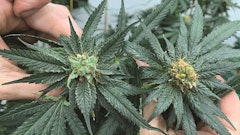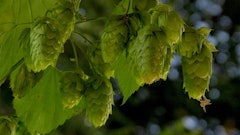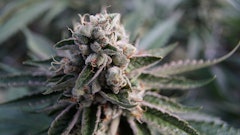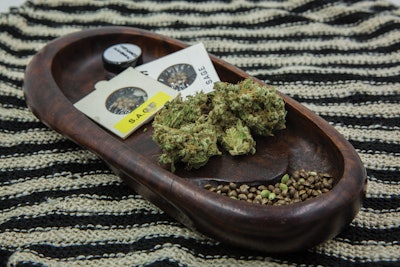
The trend toward informed consumer participation in sinsemilla breeding began at the first High Times Cannabis Cup in 1988. And in 1995, a private Dutch laboratory began chemically analyzing each entry so people could understand more about what they were consuming. By 1996, when medicinal cannabis became legal in California, users were comparing many different sinsemilla flowers made available through their local dispensaries. Fueled by an increasing number of competitions, and extensive advertising by sinsemilla seed companies, the new awareness spread, and many consumers became cannabis aficionados.
In 1999, the California chapter of the National Organization for the Reform of Marijuana Laws (NORML) conducted a survey of cannabinoid (THC and CBD) contents from a wide variety of flowers available in California dispensaries, and except for one rare CBD variety, they all proved to be essentially the same: high in THC with little to no CBD. At this point in consumer evolution, sinsemilla consumers were learning that each variety induced characteristic effects. Most already knew that THC was the predominant psychoactive molecule-and that terpenes accounted for the flavors and aromas-but they expected that the ratio of THC to CBD, possibly in concert with the subtle effects of minor cannabinoids, caused the perceived differences between sinsemilla varieties.
Obviously, this was not the whole story. Since all the different varieties had roughly the same cannabinoid contents, then what accounted for their range of diverse effects?
Enter Aromatic Terpenoids
Steep Hill Labs (2008), SC Labs (2010) and The Werc Shop (2010) were among the first publicly accessible laboratories to analyze cannabis samples for their cannabinoids, and eventually their terpenoids, and thus provided the tools to develop a more widespread and deeper awareness concerning the chemical content of sinsemilla varieties. By 2015, companies in several states were testing dispensary samples for their cannabinoid contents, as well as a range of different terpenoids, and making their results available to the public.
The resulting terpenoid profiles included the relative amounts of differing aromatic compounds that create the sensory trademark of each different variety.
Industrious indoor growers planted identical vegetative cuttings or “clones” in nearly identical growing conditions, and the sinsemilla they grew became uniform and consistent; absent were the tell-tale signs of regional terroir. Monotonously dense and green flowers with little visible variation quickly became the norm-no more Panama Reds or Colombian Golds produced under the sun in their native climates-just indoor “nuggs” with retail “bag” appeal.
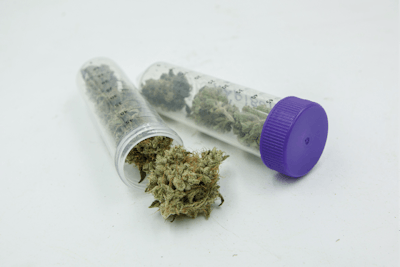
Characteristic varietal aromas became the olfactory trademarks that distinguished one variety from another. Soon, it was no longer about the experiential and therapeutic nuances of unique landraces, but simply how much and how many terpenes, cast in an ever-louder cacophony of competing aromas, resulting in discordant harmonies with few melodies.
Older consumers wax nostalgic about the amazing imported cannabis of the past, traditional landraces grown by indigenous farmers. They recall a much wider array of flavors, aromas and pleasurable effects that most younger users have yet to experience.
This is not simply an “old guy” attitude-the past always glowing brightly in hindsight.
Although the average potency of sinsemilla has risen, and modern aromas are certainly sweet and lovely, the range of psychoactive and medicinal effects, along with the plethora of original flavors and aromas, have been significantly narrowed. Stronger and louder, but more limited and often repetitive.
What happened to the wide array of sinsemilla varieties we remember? Were the unique effects of the landraces somehow linked to their characteristic regional aromas?
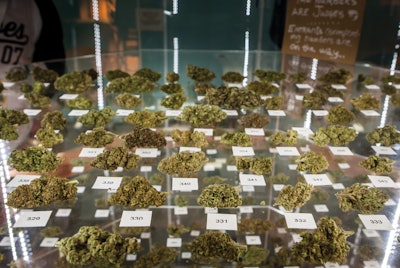
The Evolution (and Shrinkage) of Landrace Varieties
Several factors have contributed to our present-day situation. The introduction of landrace hashish varieties from Afghanistan profoundly impacted-some might say “revolutionized”-the domestic sinsemilla industry. Yet, as with many paradigm shifts, it brought mixed results. Some aficionados still yearn for the old “roadkill skunk,” while others wish “Afi” and “Indica” had stayed home. Most certainly, without the introduction of this genetically distant genome that evolved in the geographical and cultural isolation of Afghanistan, we would not have experienced such profound effects brought on by hybridization. When newly introduced broad-leaflet hashish plants were crossed with existing domestic narrow-leaflet sinsemilla varieties, the resulting hybrids showed increased vigor that, in concert with the reshuffling of exotic gene combinations, underpinned the success of today’s high-yielding varieties. Within the Afghan genome were economically favorable traits such as shorter stature, earlier maturation, increased resin production and an array of aromatic compounds not found in traditional narrow-leaflet sinsemilla varieties. Yet, along with the Afghan landraces also came detrimental traits, such as dense and leafy flower structure, extreme susceptibility to gray mold and powdery mildew, and various unpleasant aromas. Nobody’s perfect!
As the new hybrids gained popularity, sinsemilla flower competitions in the Netherlands, Spain, and eventually the United States presented forums where growers and breeders could compare techniques and procure seeds. Each year, the competitions made “new” hybrids popular, and Dutch seed companies filled the market with the winners’ offspring. Each new hybrid combination seemed novel, consumers were fascinated by the variety of choice, and many new seed varieties and their “clones” proved quite salable.
Growers of traditional narrow-leaflet varieties began to experiment with the new hybrids. Clandestine growers trying to avoid detection moved production indoors and came to favor Afghan hybrids for their earlier maturation, shorter stature and higher yields. Soon, both growers and consumers were presented with fewer viable alternatives. A new generation of customers grew up with an entirely different sinsemilla than their parents’ generation. Traditional sinsemilla hybrids between narrow-leaflet landraces originating in such exotic locations as Colombia, Jamaica, Mexico and Thailand soon withered away, and were replaced by modern-day hybrids with more recently introduced Afghan hashish landraces.
The internet makes growers’ forums available worldwide, allowing rapid evolutionary change through virtual crowdsourcing of new cultivation and breeding concepts, and creating a vast market for sinsemilla seed companies, which distribute more and more seeds. Seed companies release novel prize-winning hybrids frequently, and the many “new” varieties are crossed with existing varieties each year, creating the complex intertwined heritage we see today. Nearly every seed variety is directly related to several others, which are, in turn, indirectly related to many more. The “varieties” sold by sinsemilla seed companies are rarely uniform, producing a frustratingly diverse array of offspring, many of which do not lend themselves to growing in high-efficiency indoor gardens. Hybridization created impressive new varieties, but also turned blue and red into shades of purple. However, growers can easily select a female plant with favored traits, make cuttings and asexually multiply that single plant into a uniform, commercial mono-crop.
The American-led war on drugs greatly increased farmer risks, and over time, the profit-driven ethics of the ever-expanding cannabis trade disrupted the traditional farmers’ stewardship of their traditional landraces. The products of Western sinsemilla seed companies are sold worldwide, and traditional landrace varieties are being genetically compromised by the importation of modern high-yielding varieties.
Once early hybrid sinsemilla populations began to spread, varieties became very similar to each other, both in their aromas and their effects, and “skunk” weed became the norm. Following decades of crosses, almost all modern varieties were high in THC and proved relatively potent when grown well. The simplest and most-effective way for a grower to stand out amidst the competition was to select plants with high contents of differing aromatic terpenoids-a unique, sweet perfume to brand and promote their product. As awareness of aromatic terpene compounds increased, consumers understood that varieties are no longer simply “lemony”-they contain limonene; “piney” varieties contain pinenes, and so forth.
Culture-Driven Cannabis Breeding
Throughout traditional cannabis cultures, selection and breeding were related less to marketability, and more to how well a particular variety might function within a community. The Cannabis plant offers an endless number of potential therapeutic effects, and increasing the amount of any particular constituent changes the overall balance and efficacy of all the constituents. Terpenoids potentiate and modulate cannabinoids, and how those relationships interact with a given consumer population over time has many consequences beyond just how using the herb makes one feel. If a traditional population of cannabis users continues to rely on its local landrace, as such populations have for decades, it is unlikely that they will readily accept drastic changes in terpenoid and/or cannabinoid contents without cultural justification and/or strong economic incentives.
When we view each cannabis consumer as a part of a larger community seeking specific effects from the plant, then, essentially, they all participate in selecting varietal attributes based upon their collective needs. In this modern world we live in, problems arise when we are detached from plant selection and breeding. In present-day, prohibition-impacted cannabis communities, selection and breeding have been taken out of the hands of the very people who live within each unique environment, interact with landraces and understand their value.
Breeders, growers and distributors determine what people ultimately consume. Unwittingly, modern-day breeders removed qualities and attributes of landraces that were selected in situ over countless generations. Plants are now commodities, and commodities are developed based primarily on their mass-marketability. This has led to the success of large industrial agribusiness and the spread of GMOs.
Modern societies are incredibly diverse, and creating new varieties to facilitate the needs of the many is challenging. But with the assistance of laboratory analysis, we can better understand the many properties and potentials the Cannabis plant. For example, CBD, which breeders had almost entirely purged from sinsemilla lineages, has now been recognized as a compound of potential medicinal value and great economic interest.
As our cultural development accelerates, we have lost the luxury of time, but we do enjoy the advantages of scale. Numerous studies conducted around the world endeavor to better understand what cannabis is and what we require of it.
As cannabis use gains social acceptance, it is becoming integrated into society in much the same way as coffee, alcohol and tobacco. Unlike the others, however, cannabis exhibits more complex physiological and psychological effects. Some varieties may be energizing, while others may be sedative. Some stimulate appetite, while others suppress it. Much remains to be learned about what makes these effects so diverse.
In the past 30 years, we have experienced the near global spread of modern sinsemilla hybrids. Yet, while competitions raised consumer awareness, and seed companies spread their seeds worldwide, these factors inadvertently encouraged further erosion of traditional landraces and directed consumer attention toward only a limited part of the Cannabis genome. As we move forward, however, through close relationships between breeders, labs and ultimately the end users, the ever-evolving Cannabis genome will be shaped in ways that will best satisfy our diverse societal needs.

